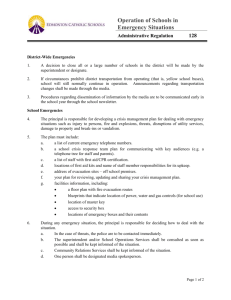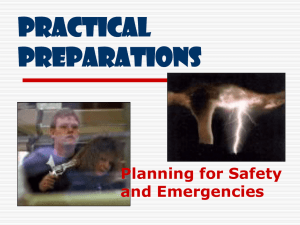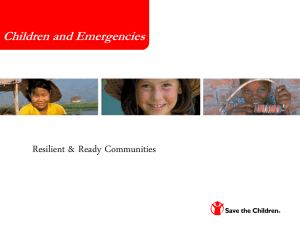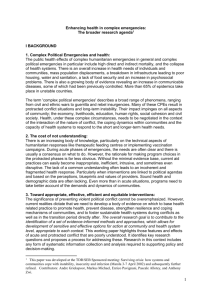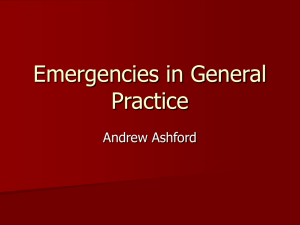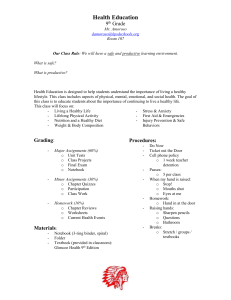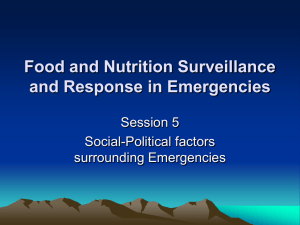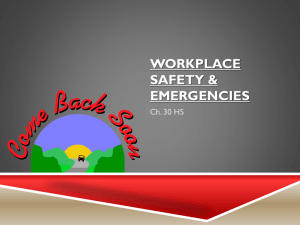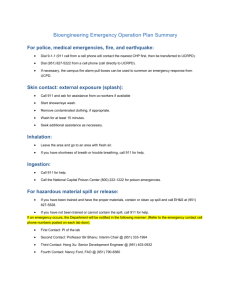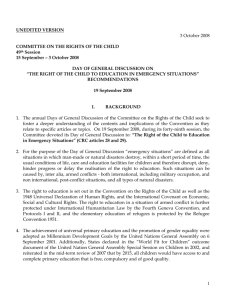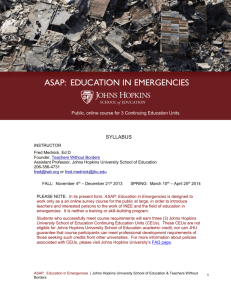END
advertisement
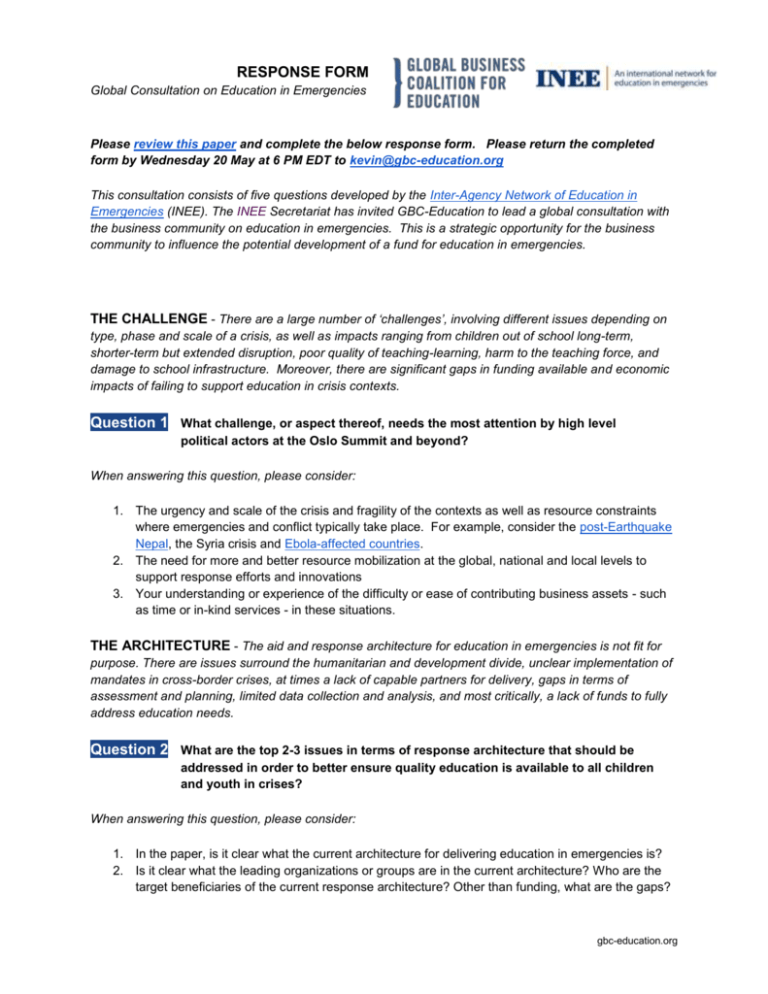
RESPONSE FORM Global Consultation on Education in Emergencies Please review this paper and complete the below response form. Please return the completed form by Wednesday 20 May at 6 PM EDT to kevin@gbc-education.org This consultation consists of five questions developed by the Inter-Agency Network of Education in Emergencies (INEE). The INEE Secretariat has invited GBC-Education to lead a global consultation with the business community on education in emergencies. This is a strategic opportunity for the business community to influence the potential development of a fund for education in emergencies. THE CHALLENGE - There are a large number of ‘challenges’, involving different issues depending on type, phase and scale of a crisis, as well as impacts ranging from children out of school long-term, shorter-term but extended disruption, poor quality of teaching-learning, harm to the teaching force, and damage to school infrastructure. Moreover, there are significant gaps in funding available and economic impacts of failing to support education in crisis contexts. Question 1 What challenge, or aspect thereof, needs the most attention by high level political actors at the Oslo Summit and beyond? When answering this question, please consider: 1. The urgency and scale of the crisis and fragility of the contexts as well as resource constraints where emergencies and conflict typically take place. For example, consider the post-Earthquake Nepal, the Syria crisis and Ebola-affected countries. 2. The need for more and better resource mobilization at the global, national and local levels to support response efforts and innovations 3. Your understanding or experience of the difficulty or ease of contributing business assets - such as time or in-kind services - in these situations. THE ARCHITECTURE - The aid and response architecture for education in emergencies is not fit for purpose. There are issues surround the humanitarian and development divide, unclear implementation of mandates in cross-border crises, at times a lack of capable partners for delivery, gaps in terms of assessment and planning, limited data collection and analysis, and most critically, a lack of funds to fully address education needs. Question 2 What are the top 2-3 issues in terms of response architecture that should be addressed in order to better ensure quality education is available to all children and youth in crises? When answering this question, please consider: 1. In the paper, is it clear what the current architecture for delivering education in emergencies is? 2. Is it clear what the leading organizations or groups are in the current architecture? Who are the target beneficiaries of the current response architecture? Other than funding, what are the gaps? gbc-education.org RESPONSE FORM Global Consultation on Education in Emergencies SOLUTIONS - A number of solutions are being discussed to bridge some of the gaps in terms of humanitarian and development architecture. Question 3 Would a set of principles agreed at a high political level make a difference? How could they be used to hold governments, UN agencies and other partners to account? When answering this question, please consider: 1. Why is education not prioritised during emergencies and protracted crises? 2. What principles (or which principles) would simplify and make more efficient financial disbursements for education during an emergency or protracted crisis? 3. Proposed Principles referred to in the ODI paper are in a paper by DFID (located on pages 15 16). Question 4 What will it take to guarantee that additional funds are in place to support education and crisis? Is a global fund or financing mechanism for education and crises a good idea? If so, how should it be organized and used? a) b) c) d) e) f) g) In what types of crises Over what kind of timeframe Who leads request (organization, coordination group, etc.) Who is eligible to receive funds Who should be involved in (i) in-country and (ii) global governance How would a new fund interact with existing architecture? Other suggestions When answering this question, please consider: 1. What would be the minimum requirements to distribute funds to grantees? 2. Currently, is there a place for the private sector to contribute funds and in-kind assets during an emergency or protracted crises? 3. What would the fund or financing mechanism seek to achieve? gbc-education.org RESPONSE FORM Global Consultation on Education in Emergencies Question 5 How might we better improve the functioning and capacity of current architecture, as described above, in other ways? What key changes could: a) b) c) d) e) f) g) Link humanitarian and development coordination Lead to better response in regional crises, in particular for refugees Increase number of capable partners for delivery Improve needs assessment Advance recovery and transition planning and costing Strengthen information management / monitoring and reporting Further address the issues you raised in question 2 or 3 above? When answering this question, please consider: 1. What are the current limitations of the response architecture? 2. What changes do you think will address the problems that the paper identifies? END Please send the completed form to kevin@gbc-education.org by Wednesday 20 May at 6 PM EDT. QUESTIONS? Please contact Mr. Kevin Kalra, Senior Project Manager, kevin@gbc-education.org ADDITIONAL RESOURCES ON EDUCATION IN EMERGENCIES A World at School Education in Emergencies Primer DFID Position Paper INEE Minimum Standards gbc-education.org
